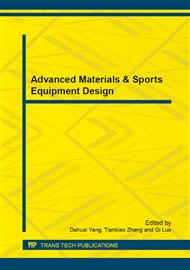p.140
p.147
p.153
p.158
p.165
p.171
p.177
p.182
p.188
Effect on Deformation in Hydroforming under Different Forming-Control Paths
Abstract:
Weight reduction and the structural strengthening of frameworks have always been of great interest for automobile and bicycle manufacturers. In order to achieve this goal, manufacturers have always been looking for new materials and their corresponding processing technology. This paper focuses on investigating the most suitable forming-control path pattern for manufacturing magnesium-based alloy quadrilateral tubular components using the tube-hydroforming (THF) process for framework components. Conventionally, there are three usual patterns of forming-control path. Through numerical simulation, it was found that forming-control path C provided the best profile results. The simulation results were also verified by physical THF experiments which were carried out at around 270oC to fabricate the quadrilateral tubular component. A good agreement between simulation and experimental result was achieved, indicating that employing forming-control path C in the actual THF process provides the best forming results, minimizing the occurrence of wrinkling. The formability of such high value-added hydroformed tubular components can be predicted. Trial-and-error during the design stage can be avoided, which contributes to lower production costs.
Info:
Periodical:
Pages:
165-170
Citation:
Online since:
October 2013
Authors:
Price:
Сopyright:
© 2014 Trans Tech Publications Ltd. All Rights Reserved
Share:
Citation:


